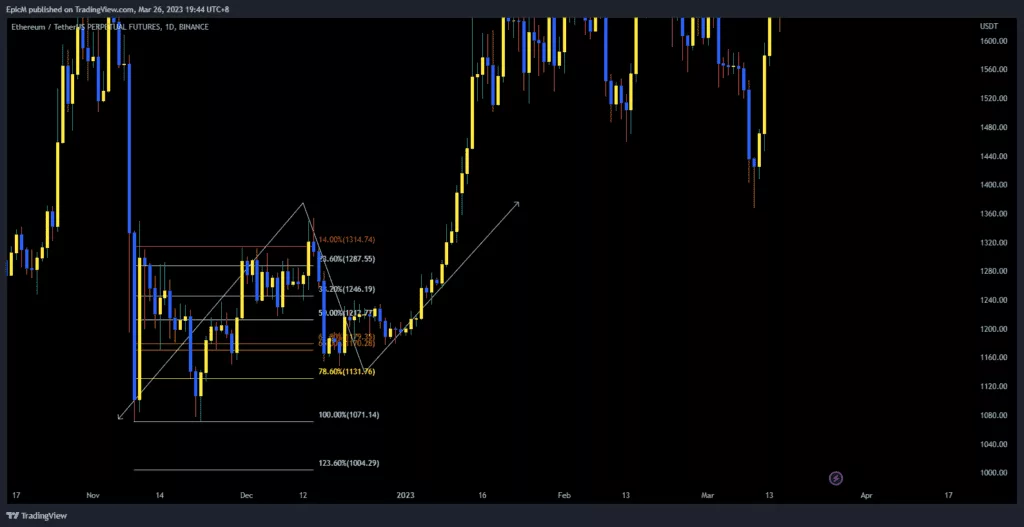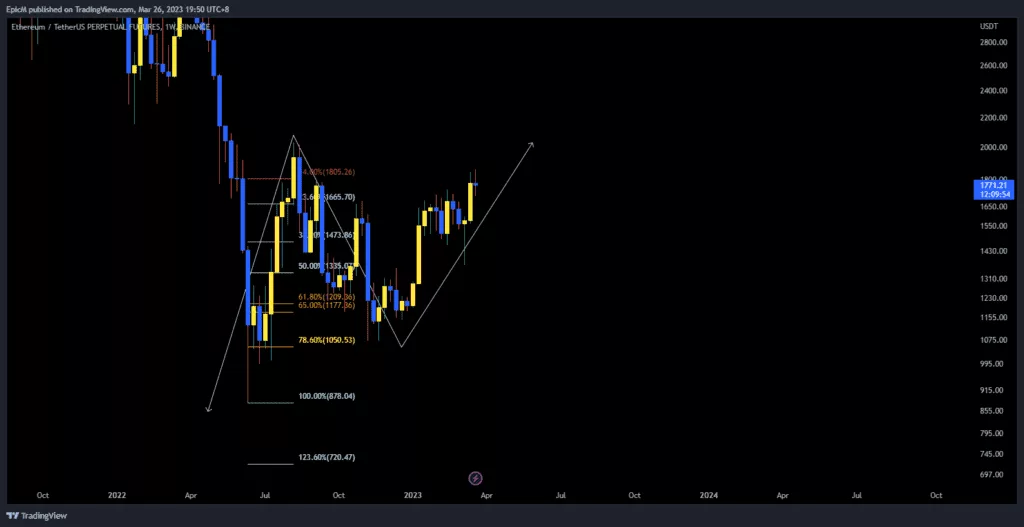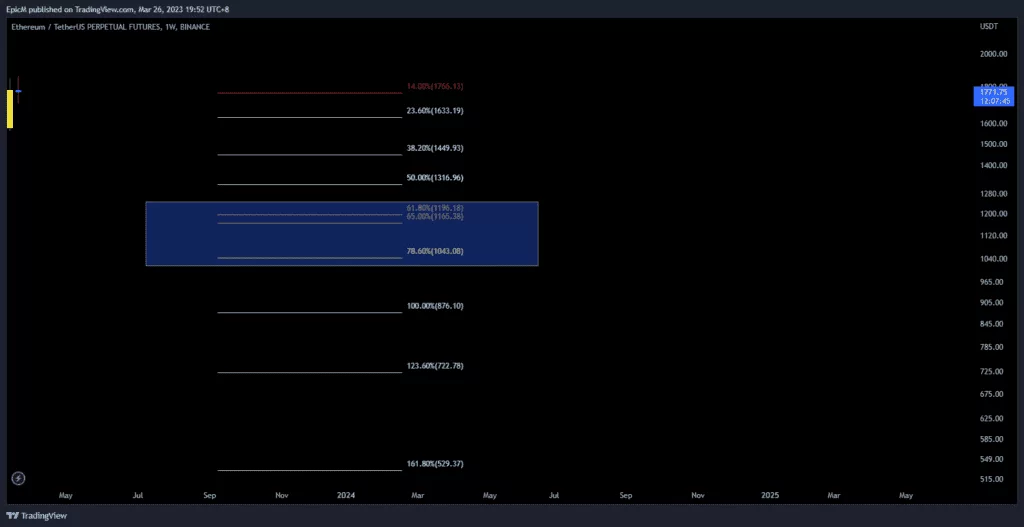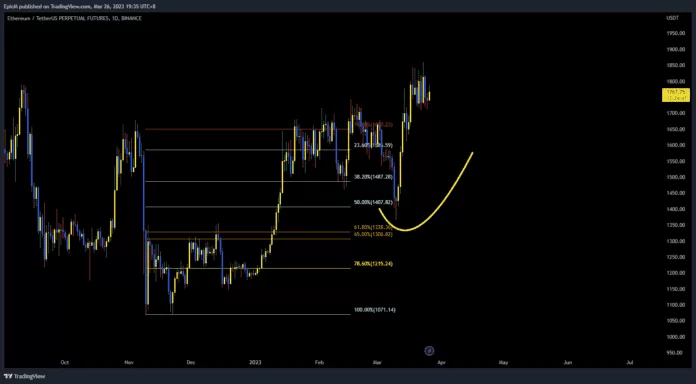Looking to master the art of understanding Fibonacci Retracement? You’ve come to the right place! This article will aid you in your journey to understanding Fibonacci Retracement by making the steps easier to grasp.
Fibonacci Retracement is a powerful tool for analyzing market trends. It can help traders identify potential support and resistance levels and determine whether a trend is likely to continue. With this knowledge, traders can make informed decisions about when to enter or exit positions in the market.
So, if you’re ready to join the ranks of professional traders who use Fibonacci Retracement as part of their trading strategy, then let’s get started! In this article, I’ll explain what Fibonacci Retracement is and how to read it. I’ll also include some tips and tricks that will help you calculate these important levels with ease.
Understanding Fibonacci Retracement And The Fibonacci Sequence
Are you a trader looking to get ahead in the stock market? Then I’m sure you’ve heard of Fibonacci Retracement and the Fibonacci Sequence. It’s the mathematical formula that all traders need to master if they want to make a killing in stocks. But what is it, exactly? And how do you use it to your advantage?
Allow me to explain. The Fibonacci Sequence is a limitless series of digits in which every numeral equals the sum of the two numerals that came before it (1, 1, 2, 3, 5, 8…). These digits generate designs observed in the natural world, such as in economic markets, that traders used to pinpoint prospective levels of support and resistance. Fibonacci Retracement levels are sought after by traders as decisive points for either starting or concluding trades.
Fibonacci Retracement combines these mathematical patterns with trading strategies to help traders identify important price levels that could signal potential profit opportunities. By understanding how this works and how to calculate Fibonacci retracement levels for trading, you can take your trading game to the next level!

How To Calculate Fibonacci Retracement Levels For Trading
Now that you know about Fibonacci Retracement and the Fibonacci Sequence, it’s time to learn how to calculate Fibonacci Retracement levels for trading.
The calculation of a Fibonacci Retracement level is based on two extreme points–usually a high point and a low point–on a price chart. Here are the steps for calculating a Fibonacci Retracement:
- Identify the high and low points of the range you want to measure.
- Calculate the difference between the two points.
- Divide this number by three ratios from the Fibonacci Sequence: 23.6%, 38.2%, 50%, 61.8%.
- Add each number to the low point to find support levels, or subtract each number from the high point to find resistance levels.
These four numbers are very important in technical analysis since they represent potential reversal points in an asset’s price trend, which can be used by traders as entry or exit points when trading stocks, commodities, currencies, or other financial instruments.
With this knowledge, you can now understand why these levels are so important when trying to make profitable trades in any market environment. Now that you know how to calculate Fibonacci Retracement levels for trading, let’s move on to drawing them on a price chart.
Drawing Fibonacci Retracement Lines On A Price Chart
Drawing Fibonacci Retracement Lines on a Price Chart is a straightforward process. First, you need to identify the highest and lowest points of the price chart. Then, you draw a straight line connecting the two points. The next step is to determine where the Fibonacci Retracement lines should be drawn.
These lines will come at 23.6%, 38.2%, 50%, 61.8%, and 78.6% of the distance between the highest and lowest points of your chart. Once you have these lines in place, you can use them to evaluate potential resistance and support levels for your selected asset or market.
By using these Fibonacci Retracement Lines, traders can analyze patterns in the price movements and make more informed decisions about their trades. They can also better assess when it might be more helpful to enter or exit a position based on how much retracement has taken place from a prior high or low point in the market.
With this knowledge, traders can use Fibonacci Retracements as an effective tool to identify key support and resistance levels in their trading strategy.

Using Fibonacci retracements to recognize crucial levels of support and resistance.
Now that we’ve learned how to draw Fibonacci Retracement lines on a price chart, let’s look at how we can use them to identify key support and resistance levels. As the name suggests, Fibonacci Retracements are used to measure how far price retraces from an existing trend before it resumes its original direction. By mapping out these levels, traders can expect potential areas where the market may reverse or break through.
Using Fibonacci Retracements is relatively easy. All you need to do is locate the highest high and lowest low on the chart and then draw the Fibonacci Retracement lines at 23.6%, 38.2%, 50%, 61.8% and 100%. These percentages represent potential points of reversal in price action, providing traders with opportunities to enter or exit trades depending on their analysis of the situation. Keeping track of these levels should help traders make more informed decisions for trading strategies for both short-term trading and long-term investment.
Fibonacci Retracement Trading Strategies For Traders And Investor
Fibonacci Retracement Trading Strategies are incredibly popular with traders and investors. By understanding the mathematical rules behind Fibonacci retracements, you can use them to your advantage when trading financial markets.
The key to successful Fibonacci trading recognizes potential levels of support and resistance. This allows you to identify possible reversal points in the market, which can then be used as entry and exit points for trades. To do this, you must first understand how Fibonacci retracements work.
Fibonacci retracement levels, based on Fibonacci ratios, help identify potential support and resistance points in financial markets:
- 23.6%: A weak support/resistance level, often used in short-term trading.
- 38.2%: A moderate support/resistance level, more reliable than 23.6% but less than 50% and 61.8%.
- 50%: A widely recognized level, seen as moderate to strong support/resistance.
- 61.8% (Golden Ratio): The most significant level, showing strong reversal or consolidation points.
- 78.6%: A deep retracement level, acting as a powerful support/resistance.
These levels help traders predict potential price reversals or consolidations in financial instruments.
In order to identify these levels of support and resistance, it’s important to look at the recent highs and lows in the market before drawing a Fibonacci retracement line onto your chart. Once you’ve identified these levels, you can then use the various Fibonacci trading strategies available.
For example, if prices reach a level of support or resistance at one of the Fibonacci retracement levels, traders may enter a buy or sell position, respectively. Similarly, traders may also use Fibonacci retracements as targets for profit taking when entering trades based on other technical indicators, such as moving averages or trend lines.
By understanding how to read a Fibonacci retracement chart and using it with other technical analysis tools, traders can increase their chances of success in the markets while minimizing risk exposure at the same time.
With practice and patience, anyone can learn how to trade successfully using these powerful strategies!

Frequently Asked Questions
What Other Technical Indicators Can Be Used In Combination With Fibonacci Retracement?
Are you looking to gain mastery in technical analysis? Then you’ve come to the right place! Combining Fibonacci Retracement with other indicators can help you get a better picture of what’s going on in the market. But which indicators should you use?
There are a few indicators that work particularly well with Fibonacci Retracement. Relative Strength Index (RSI) is one such indicator, as it helps measure whether an asset is overbought or oversold. Moving Average Convergence Divergence (MACD) is another useful indicator, as it helps identify changes in momentum and provides additional confirmation for entry and exit points. Stochastic help identify when an asset has reached its peak or bottom.
By combining Fibonacci Retracement with these other indicators, traders can gain insight into potential support and resistance levels, as well as determine entry and exit points for trades. This combination of technical analysis techniques can help traders make informed decisions about their trading strategies and increase their chances of success.
What Time Frame Should I Use When Using Fibonacci Retracement?
When using Fibonacci retracement, it’s important to consider what time frame you should use. It all depends on the type of trade you’re making and the goals you’re hoping to achieve. When dealing with short-term trades, it’s best to use a shorter time frame, such as 5 minutes or 15 minutes.
This allows for more accurate readings and a better chance of catching a trend reversal in the short term. For longer-term trades, however, it’s better to use a longer time frame such as 1 hour or 4 hours. By taking this longer-term approach, you can get an overall picture of how the market is trending and make more informed decisions about when to enter and exit your positions.
It’s also important to note that Fibonacci retracement can be used frame. So if you trade in a very volatile market or need more precision in your analysis, then using smaller time frames may be beneficial. If you’re looking for a long-term investment strategy, then larger time frames would be more suitable. Ultimately, it comes down to finding the balance between precision and accuracy that suits your individual trading needs best.
Can Fibonacci Retracement Be Used To Identify Trend Reversals?
Certainly, the Fibonacci Retracement technique can help you detect changes in market trends. Suppose you’re a day trader aiming to benefit from the unpredictable markets this year. You might have observed that some stocks frequently reach a certain peak and then abruptly shift direction. By utilizing Fibonacci Retracement within your analysis, you can recognize potential trend reversals and make well-informed choices on how to effectively profit from them.
Fibonacci Retracement is an invaluable tool for any trader or investor looking to maximize their profits. Here are some ways it can be used:
- To determine potential support and resistance levels
- Support levels are points where the price may stop falling and start rising again
- Resistance levels are points where the price may stop rising and start dropping again
- To expect possible entry and exit points for trades
- Identifying entry points allows traders to buy stocks at a helpful time
- Identifying exit points allows traders to sell stocks before they become overvalued
- To predict trends in the market
The beauty of Fibonacci Retracement is that we can apply it across many time frames, from short-term trades lasting minutes or hours to long-term investments spanning months or even years. It’s also relatively simple to implement, making it an ideal strategy for both novice and experienced traders alike. With its help, traders can gain an edge over the markets by having a better understanding of when opportunities may arise.
Can Fibonacci Retracement Be Used In Any Market?
Have you ever wondered if we can use Fibonacci retracement in any market? Well, the answer is yes! Fibonacci retracement levels are a great tool for traders at all levels. It can identify potential areas of support and resistance, which can help traders look for entry and exit points.
To calculate the Fibonacci retracement levels, one must use the key Fibonacci ratios got from the Fibonacci sequence, which comprises 0, 1, 1, 2, 3, 5, 8, 13… Each number in the sequence is roughly 1.618 times larger than the preceding number. These ratios, specifically 38.2%, 50%, and 61.8%, are employed to divide the vertical distance between two extreme points on a chart. When these three points are plotted on a chart, it can help identify potential areas of support or resistance.
Fibonacci retracements can provide valuable insight into potential future price movements in any market. Knowing when to enter or exit a trade based on these levels could give you an edge over other traders. With practice and patience, you could become proficient at using this powerful tool in your trading strategies.
What is the level of dependability of Fibonacci Retracement levels?
I’m sure you’ve heard of the magical Fibonacci retracement levels, but how reliable are they, really? Well, I’ll tell you one thing: it’s not a crystal ball! It might tempt to rely too heavily on these levels, but it’s important to remember that they are just one piece of the puzzle.
Let me break it down for you:
1. Fibonacci retracement levels are simply support and resistance lines that can predict potential future price movements.
2. While they can give insight into price action, they’re not 100% accurate and should only be used as part of a larger trading strategy.
3. Even though Fibonacci levels can provide useful information, they are far from perfect. Someone should never rely them upon as your only source of guidance when making trading decisions.
So, while it may seem like Fibonacci retracement is the answer to all your trading woes, it’s important to understand its limitations and use it in combination with other tools and analysis methods for more informed decision-making. Although useful in certain situations, relying solely on Fibonacci retracements is unlikely to lead to consistent profits.
Conclusion
It’s time to put all of this Fibonacci Retracement knowledge into the test. I can confidently say that by now, I’m an expert in this indicator! After all, I already know how other technical indicators can be used in combination with Fibonacci Retracement, what timeframe should be used, and if we can use it for trend reversals. But here’s the kicker: Fibonacci Retracement isn’t just confined to one market; We can use it in any market!
But despite my newfound expertise, one thing still looms large on my mind: How reliable are these Fibonacci Retracement levels? As they say, there’s no such thing as a sure thing. However, by combining other technical indicators with Fibonacci Retracement levels and exercising caution when trading with them, I believe these retracements can provide valuable insights into a market trend.
It’s important to remember that while Fibonacci Retracement is a very useful tool to have in your trading arsenal, it should not be relied upon too heavily. As with any indicator or strategy, it is always wise to proceed with caution and use as many tools as possible when deciding about trades. With proper research and diligence, however, I’m confident that you will make informed decisions about your trades – and maybe even make some profits along the way!



